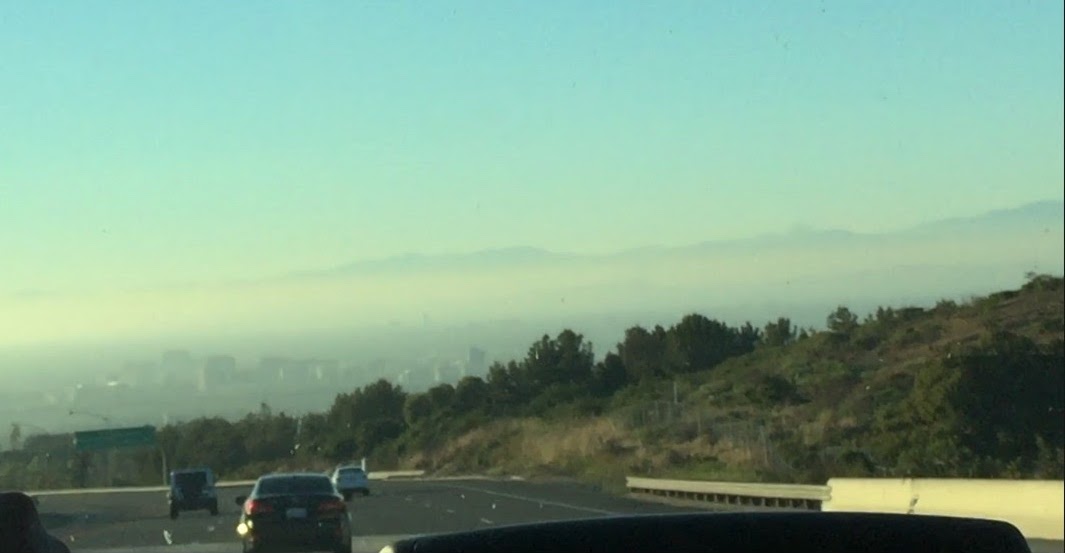The coronavirus pandemic has impacted our daily lives in various ways. It has changed the world both negatively and positively. However, the negativity lingering around the world has blinded us from seeing the positive changes this pandemic has brought to us, particularly when it comes to the environment . In 2017, when I visited Los Angeles, I noticed quite a bit of smog in that area. Smog, which is created when fog combines with polluted air, is both unhealthy and unsightly. Due to all of that air pollution, it was almost impossible to see the beautiful skyline that was masked with the sickening smog. It was truly dejecting to see how negligent we can be to the world that has looked after us for centuries. However, now when I see the pictures of that same place, it looks like a completely new place to me. Not only can you see the incredible skyline now, but you can also see the beautiful mountains behind it.
What is Air Pollution?
So what exactly is air pollution? In addition to greenhouse gases, air pollution also consists of tiny, solid particles. These particles are made up of car emissions, airplane emissions, chemicals from factories, and dust among other things. According to environmental engineer Vishwa Raval from Wright-Pierce, “Manufacturing companies have huge environmental footprints due to all of the waste materials that they produce.” This is because those waste materials can be very harmful for the environment. Many manufacturing processes involve heating raw materials and doing fractional distillation (the separation of chemical compounds into their components). Doing these processes releases pollutants like sulfur dioxide into the air. Other manufacturing systems allow the plant to run via steam power (which is obtained through heat generated from coal or diesel furnaces). The process of burning these fuels also releases pollutants into the air. However, “The step that they’re [manufacturing companies] taking is [asking] how can we reduce that waste,” said Raval. “So when we’re dealing with our air quality systems, [we know] what we’re releasing from our area.”
However, many people may not know that some air pollutants are poisonous for our bodies. According to the United States Environmental Protection Agency (EPA), toxic air pollutants mostly “originate from human-made resources.” In total there are about 187 hazardous air pollutants, such as perchlorethylene (which is released from dry cleaning facilities) and benzene (which is detected in gasoline). Inhaling such dangerous pollutants can put humans at the risk of many long-term health effects such as lung cancer, heart disease, and respiratory diseases like asthma and emphysema. Air pollutants may also cause long-term damage to many organs such as your liver, brain, and kidneys.
How the Covid-19 Pandemic has Reduced Air Pollution
A positive impact that has emerged amid the coronavirus crisis is the reduction in air pollution. According to Raval, Covid-19 has put a positive spin on the improvement of air pollution because there are currently “less people outside so there’s time for nature to breathe.” After just a few months of lockdown around the globe, we have been noticing major improvements in the air quality. Due to the decline in the use of airplanes and cars, there has been less pollution caused by manmade products. According to CNN there is a “96% drop in air travel as [the] pandemic continues.” As a result, there has also been a reduction in carbon emissions and nitrogen oxide emissions.
Due to the lockdowns and stay-at-home orders, there has been a significant improvement in the air quality of major cities around the world such as Los Angeles. According to Yifang Zhu, a professor at the Fielding School of Public Health in UCLA, “The average levels of PM2.5 for the L.A. area dropped from about 16 micrograms per cubic meter to about 12 micrograms per cubic meter.” This basically means the air quality of L.A. significantly improved from “medium to good.”
Besides Los Angeles, there are numerous other cities who have experienced less air pollution and smog after the lockdowns and stay-at-home order. Some of them include Delhi, Seoul, and Wuhan. Delhi saw a decrease of 60 percent from March 23 to April 13, Seoul saw a decrease of 54 percent from February 26 to March 1, and Wuhan saw a decrease of 44 percent from February 3 to February 24. Note that these were the dates of lockdown in each of the cities and the decrease of air pollution in that specific time period.
How to Keep Air Pollution Low in the Future
After the coronavirus situation is over, the whole world will get a chance to keep the air pollution low like it is currently. However, in order to do this we will need to bring a few changes into our lives.
Some examples of ways to reduce air pollution are:
- Use alternatives like walking, electric cars, bikes, or buses instead of driving cars.
- Never keep your engine on as it creates a hotbed for pollution.
- Buy fewer products that are manufactured using fossil fuels as it can reduce air pollution significantly.
- Use energy efficient light bulbs and appliances.
- Conserve energy by turning your electric appliances and lights off when they are not in use.
- Use energy efficient appliances and light bulbs.
As can be seen, there are many ways to keep air pollution low in the future if we really give it a try. Air pollution has severely impacted both humans and the environment in the past, and we don’t want that to continue anymore. The Covid-19 pandemic has given us a chance to rehabilitate the condition of our environment, and by bringing a slight change into our lives, we can bring a huge change into the world.
VOX Media Cafe reporter Nishthha Pandya, 16, attends Alpharetta High School.




